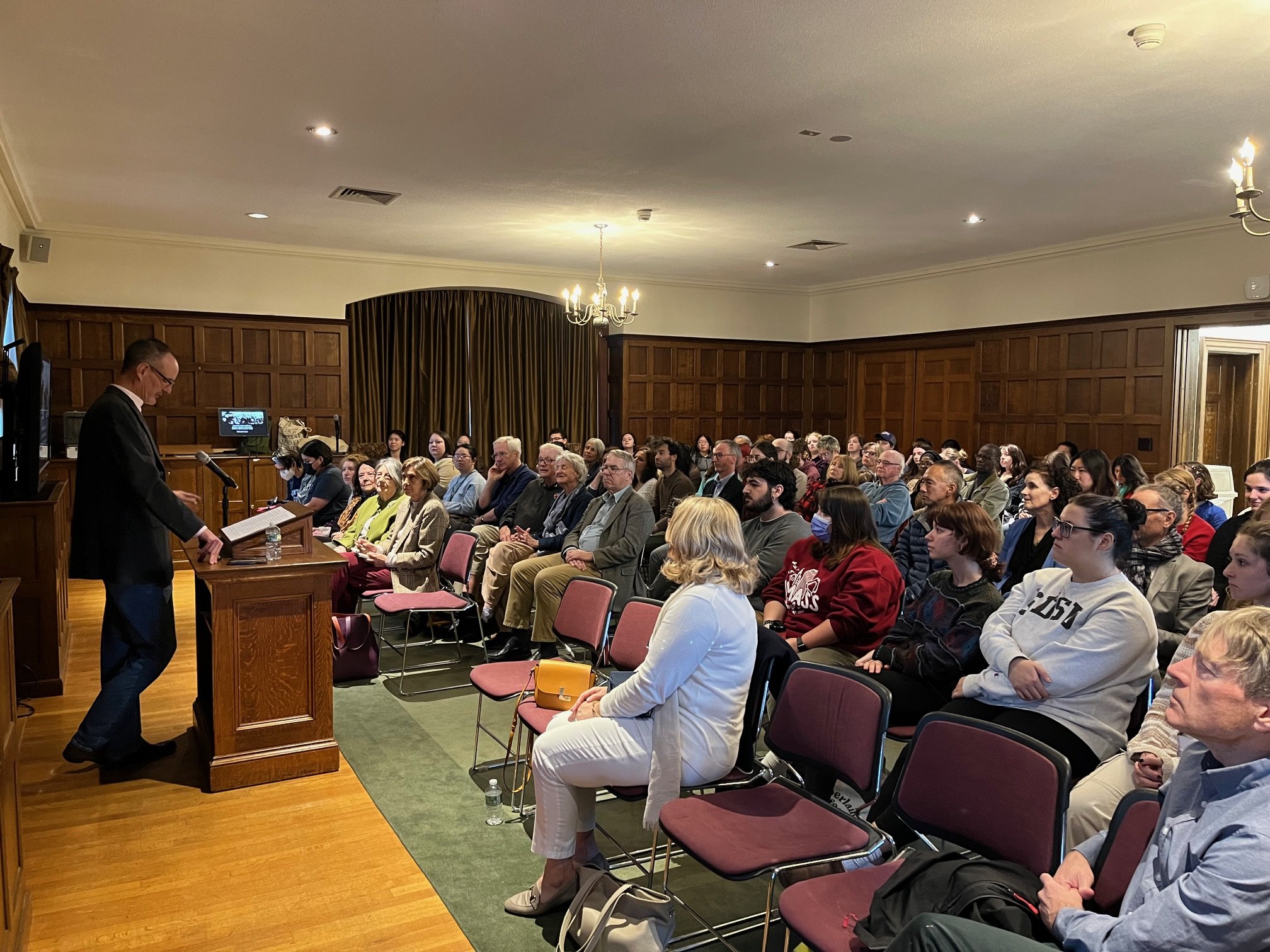By Kiera McLaughlin ’26
Global Editor
Studying abroad is a daunting experience, but with over 40% of Mount Holyoke students taking part, underclassmen can easily find resources at the McCulloch Center for Global Initiatives or talk to their peers to hear personal stories.
On Feb. 25, these opportunities converged at a discussion hosted by the McCulloch Center and CET Academic Programs, featuring six students speaking about their experiences in a panel called “Studying Abroad While Black.”
Throughout the talk, each student was asked a series of questions from the guest moderator Sean McGlynn, CET’s Institutional Relations Manager for the Northeast. Questions referenced the panelists’ academic, social life and safety while abroad, and as well as integrating into new communities as a Black person in a different country.
CET is one of the study abroad programs partnered with the McCulloch Center, with programs in Jordan, China, Taiwan, Czech Republic, Italy and Brazil. Two of the panelists participated in the CET Brazil program, while others studied abroad in the Netherlands, Australia, South Africa and France.
McGlynn explained at the beginning that CET programs based in Latin America are popular with many Black students, as they have courses focused on racial studies and social justice. The program also provides diversity, equity and inclusion scholarships and identity resources such as blogs and alumni discussions.
When asked about their experiences with safety abroad, the students all agreed their programs and cities were generally safe. They recommended students practice common sense and be aware of their surroundings.
Jasmine Greene ’25 said that while abroad, “I found a queer community, which is always more accepting no matter where you go, which made me feel more safe.”
When discussing their experiences as Black students in a new country, their responses varied on where they were located in the world.
Kayla Nelson ’25 shared that during her time in Australia, she would think, “Oh wow, I’m the only Black person in this room.”
“It was different being the only one there, and I felt like I had to represent my identity [by] myself because there was no one else there like me,” Nelson continued.
Nelson said that she made friends, and, eventually, she was able to think about her time abroad differently. “It just took some time,” she said.
Some of the other students had a different experience. Sarah Bell ’25 said, “Being a Black person in Brazil, you’re the majority … I feel like there is a lot of pro-Blackness.”
According to Travel Noire, a digital media company covering content about the African Diaspora, Brazil had the largest Black population outside of Africa. About 55% of the population identify as Black or mixed African descent.
“In general, it’s a very beautiful experience to go to Brazil as a Black person,” Bell said.
Ruth Poku ’26 was in the same program in Brazil, and shared that the majority of the program cohort was made up of Black students.
She did note her experience was different as a dark-skinned Black woman. She reflected that there are “not a lot of dark skinned people,” and she was catcalled in the white, middle class neighborhood where they lived.
“Not different than what I experience in America,” Poku said.
Opening up about these negative experiences did not counteract the support the panelists expressed for underclassmen to go abroad during their time at Mount Holyoke College.
In an interview with Mount Holyoke News, Sarahjeen Paul ’25 said she decided to participate in the event because “I just really want more Black people to go abroad and have fun, and have this experience because it was so life changing. It’s really valuable to spend a semester or year somewhere different, and somewhere as beautiful as South Africa, too.”
Paul recommended all students going abroad to be financially responsible and push themselves. “Budget your money, please! Please, please, please! And prioritize having experiences, not everything you do has to cost money … but also it’s important to get out there,” Paul said.
Nelson shared a similar sentiment in an interview with Mount Holyoke News. “Don’t let the difficulties you might face, wherever you’re going, stop you from going. Go wherever you want to go, do what you want to do … Just plan ahead, and just know what you’re getting into, but don’t let that discourage you,” Nelson said.
Karishma Ramkarran ’27 contributed fact-checking.


















